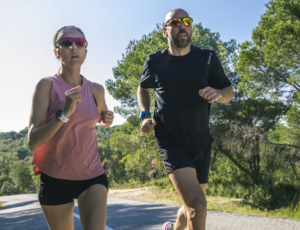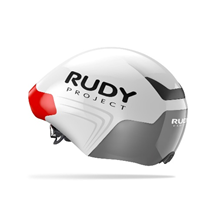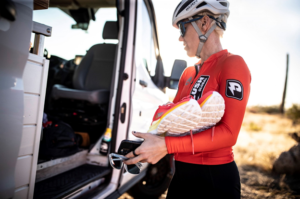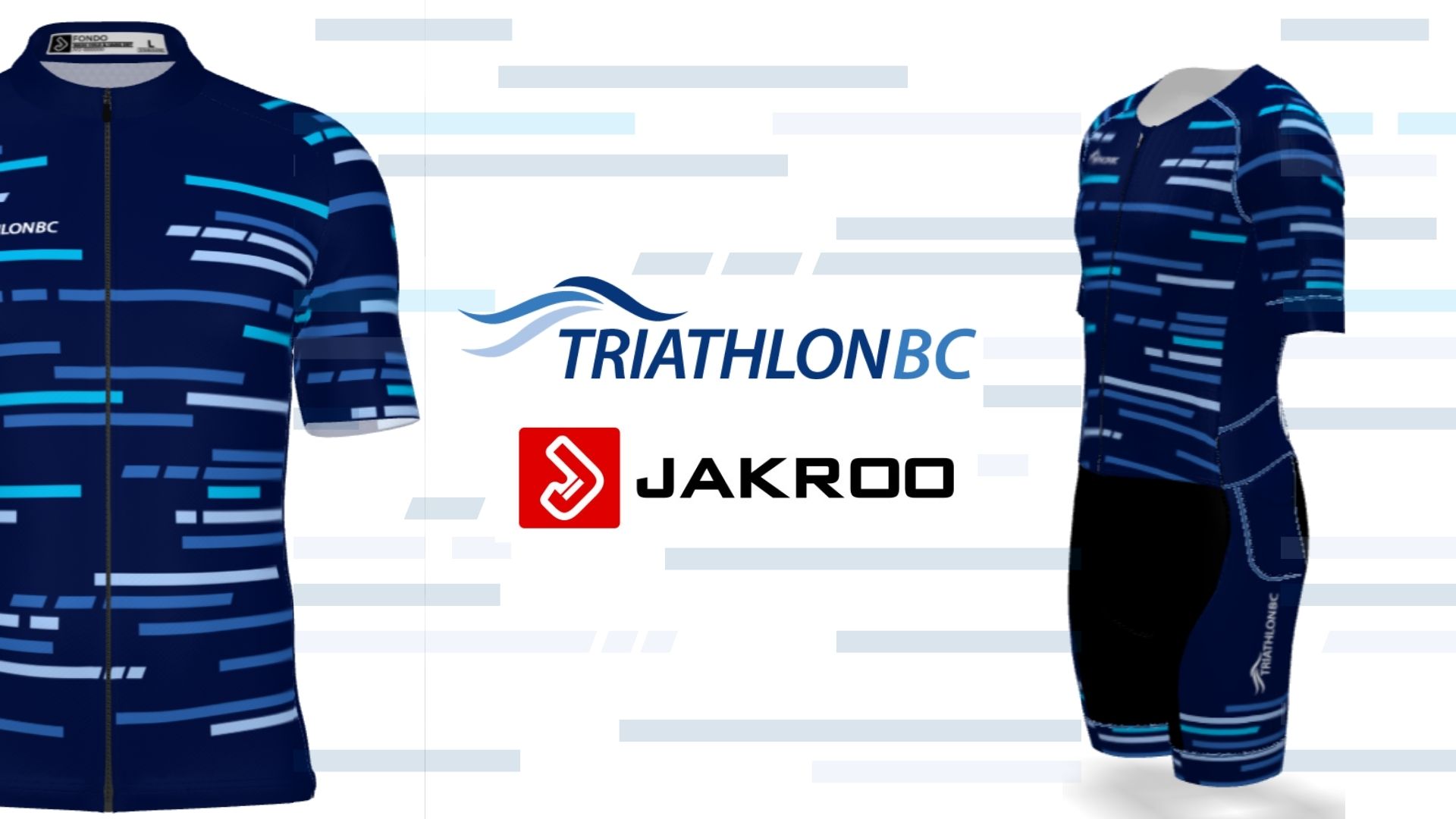You finally did it. You signed up for your first triathlon, after resolving during the pandemic to get back out there once it seemed safe to do so. Now, though, you face normal buyer’s remorse, or “what have I gotten myself into?” Don’t fret—you’re not the first person on the moon, and the following eight suggestions will help you arrive at your start line feeling as prepared as possible. Why do we say “as prepared as possible?” One of the biggest reasons to try something new is to experience the unknown, and as much as we wish we could let you know what’s going to happen ahead of time, doing so would undermine the reasons you decided to do this in the first place: because you’re a brave and awesome person who relishes new challenges. OK, let’s get you geared up for triathlon!
Below you’ll find eight services or items that will prepare you for your first race. Some of them, however, aren’t pieces of gear, since learning will be the biggest asset you can secure. As for anything physical you’re going to purchase, make sure that it fits well and makes you feel amazing. Feeling good often leads to being good, so make sure anything you put on your physical self contributes to your sense of purpose.

Coaching or a Local Triathlon Club
What? No new bike? Yeah, sorry. You don’t need a new bike. Wait until you decide that you actually enjoy this sport. Whatever is hanging in your garage will do the trick, we promise you. What you DO need, though, is support and camaraderie. Both coaching and your local triathlon club can accomplish this goal, and those who engage in new habits with the support of a group or a mentor are far more likely to stick with those new behaviors over the long term. Find a local Club and see if they’re a fit. Some groups cater to athletes chasing performance, others Clubs focus on long distance events, while others provide a combination and include a social flair. Triathletes love to talk about races, so as long as you can deal with some long-winded conversations, you’ll soak up reams of information by finding a club or working with an accredited coach.
Physical Assessments
Still no stuff? Sorry, no. After finding people to do this with and someone to lead you through it all, you should make sure you are physically ready to tackle any distance of a triathlon. Schedule a physical with your doctor, which you should be doing every year anyway. If you have any injuries already from work or from another sport, go see a physical therapist who specializes in athletics and ask for a running gait assessment. Running is the discipline most likely to leave you hurt, so this service should be your priority. After that, a good bike fit can help you settle into a comfortable, efficient position during the cycling leg, which is crucial because that’s where you’ll spend the bulk of your time in a race. Finally, hiring a swim coach to look at your stroke can save you weeks (or years, in some cases) of time, since swimming is the most technical of the three sports.
A Great Helmet
Racing triathlons requires a helmet (and any time you throw a leg over a bike you should be wearing one), but this guidance differs from our advice about the bike. We caution you against using whatever is hanging in your garage, because who knows what that helmet has been through? This is the place to buy something new, and it’s important to make sure it fits, both from comfort and safety perspectives. The Nytron helmet pictured here is safe, light, well-ventilated, and low-profile. Like any good helmet, you’ll forget it’s there until you need it, and then you’ll be very happy you purchased a new helmet.

Excellent Sunglasses
Choosing to participate in outdoor activities will markedly improve your health, but that doesn’t mean you can ignore some of the risks from spending significant time outdoors. Last year we published a story on eye health and how proper eyewear can help you stay safe over decades of sport involvement. Good sunglasses make you look cool, sure, but the real benefits come from eye and skin protection, plus reduced fatigue from squinting (it’s a real thing—eye strain leads to brain strain, which leads to real fatigue). A pair of shades like the Cutline, Spinshield, or Tralyx+ shown here cover your eyes and a significant portion of your face, providing great optics and excellent coverage.
Inexpensive Wetsuit or Short-Term Rental
Most races will be wetsuit-legal (under a certain water temperature), so you’ll need to procure a wetsuit. For your first race, just rent one! Renting a wetsuit is similar to our advice about picking up a new bike: you just don’t need to buy a wetsuit yet. Wetsuit companies offer different shapes and buoyancies, and renting presents an opportunity to try different brands. The most important aspect of your wetsuit is the fit. We can talk your ear off about different grades of rubber, zip-up vs. zip-down, sleeveless, half-sleeved, full-sleeved, hip-buoyant, hip neutral, blah blah blah, but 95% of your wetsuit experience will be determined by whether or not it fits well.

Cycling Shoes that Fit Properly
This will probably sound just like the wetsuit part above, but you’re going to spend a lot of time on your bicycle, and the parts of you that touch the bike cause the most discomfort if not set up correctly (see the bike fit section). Cycling shoes should fit more snugly than running shoes, as your foot doesn’t need to move as much inside them, but something that fits poorly and tightly simply means abrasions, blisters, and numb feet. Spend some time with your bike fitter finding out what shoes your foot enjoys, and then stick with those shoes season after season.
An Aero Helmet
Another helmet? If going fast is a priority for you, or going faster with less effort is a priority for you, then picking up an aero helmet isn’t a bad idea. Aero helmets provide the biggest bang for your buck in terms of shaving minutes while preserving your wallet. Only coaching comes close to the percentage improvement from a good aero helmet, but coaching requires a long-term investment. A high-quality, properly fitting aero helmet like the Rudy Project The Wing shown here will take minutes off your bike split. Plus, you get to look like a Martian.
New Running Shoes (But Not Too New!)
File this in the same category as the cycling shoes. The run leg represents the second-largest slice of time in your triathlon, and also threatens the highest probability of injury. After you’ve gotten your gait assessment (see item number two!), ask the therapist if they have any recommendations for your particular style of running and shape of foot. Once you’ve followed their recommendations and picked up a pair that seems to work for you, go ahead and grab a second pair. Running shoes only last about six months or 500 miles, and we’ve seen athletes go way over that limit. Having a second pair around makes it easier to switch when it’s time, and busted up running shoes will land you at the physical therapist’s office for all the wrong reasons.

Conclusion
This is a lot of stuff, we get it. Triathlon can be an expensive sport, but if you make good purchases and maintain your gear, your investment will shrink over your time in the sport. Remember: you DON’T need a new bike, as much as you think you do. Remember that getting injured will cost money, too, and keep you away from a sport you may (WILL!) grow to love, so make the purchases now that will keep you healthy later. Bonne chance!
Triathlon BC members receive INSTANT discounts across the full Rudy Project spectrum when purchasing through our Rudy Project VIP Portal. Log on, start saving today!




